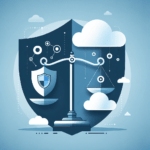
# Cybersecurity for SMEs: A Hybrid Approach Between Quality and Cybersecurity
In recent years, small and medium-sized enterprises (SMEs) have seen an exponential increase in threats related to cybersecurity. This situation is particularly concerning for the manufacturing sector, which represents a pillar of the economy. SMEs are therefore called upon not only to recognize the importance of cybersecurity but also to implement concrete measures to protect their data and intellectual property.
## Why SMEs Need to Invest in Cybersecurity
In an era where data has become a valuable asset, safeguarding business information is no longer an option but a necessity. Investing in cybersecurity enables SMEs to:
1. **Protect Their Data**: safeguarding sensitive information and intellectual property is essential to maintaining a competitive edge.
2. **Ensure Operational Continuity**: cyber-attacks can seriously compromise business operations, leading to disruptions and economic losses.
3. **Pursue Continuous Improvement**: SMEs must constantly update their systems and processes to tackle new cybersecurity challenges.
To achieve this, it is crucial to adopt adequate security measures, train personnel, and prepare to respond quickly to any attack.
## A Hybrid Approach: ISO 9001 and Cybersecurity
The integration of the ISO 9001 standard with the essential controls of the national cybersecurity framework represents an innovative hybrid strategy. ISO 9001 is an international standard that guides organizations in creating a Quality Management System (QMS). This system not only ensures the efficiency of business processes but also highlights the importance of information security.
The standard is based on fundamental principles, including:
– **Customer Focus**: customer satisfaction is crucial for the success of an organization.
– **Leadership Involvement**: management support is essential for achieving quality objectives.
– **Process Approach**: activities must be managed as interconnected processes to optimize efficiency.
– **Continuous Improvement**: striving for excellence is necessary.
The national cybersecurity framework, developed by academic research centers, provides practical guidelines for data protection and cybersecurity management. Although it is not a regulatory mandate, this framework serves as a valuable support in defining effective strategies, helping SMEs to reduce costs and increase the effectiveness of their security measures.
## 15 Essential Cybersecurity Controls
For SMEs facing budget and resource limitations, the national framework introduces 15 essential controls. These controls are designed to be easily implementable, minimizing economic impact. Among the key controls are:
– **Access Management**: ensuring that only authorized personnel have access to sensitive information.
– **Data Backup**: ensuring that critically important data is regularly saved and can be recovered in the event of an attack.
– **Monitoring and Control of Devices**: implementing monitoring systems to detect suspicious activities.
Integrating these controls with ISO 9001 requirements allows for a synergy that enhances the overall security posture of the organization.
## The Benefits of Integration
Adopting a hybrid model between ISO 9001 and the cybersecurity framework offers numerous benefits to SMEs, such as:
1. **Improved Operational Efficiency**: an integrated quality management system optimizes internal processes, making the company more agile and responsive.
2. **Reduced Risks**: identifying and managing cybersecurity risks enhances the organization’s ability to withstand attacks.
3. **Regulatory Compliance**: for SMEs that must face specific directives.


